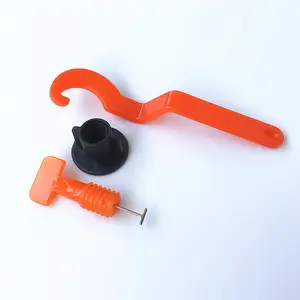A floor leveler forms an integral part of the building and remodeling sector, with the major purpose being to provide a flat plane for all flooring works. Contractors, homeowners, and professionals across different industries consider this important product essential to their needs. The use of floor levelers makes damaged, uneven, or rough subfloors turn out into a neat background to be covered by different types of floor covering.
Advantages of using floor levelers
Irregularities on the subfloor can be corrected using a floor leveler. Such imperfections could be due to concrete settlement, natural undulations, or old damage. Flooring installation requires a flat and smooth foundation, which can be made using concrete floor levelers affordably. Floor levelers can add life to your flooring for up to ten years. It helps keep uniform pressure from developing on specific points, which may create problems like wear and tear over time. This can also result in curved floors, which is especially problematic for flooring materials to look straight and correctly aligned. The floor levelers for wood ensure a perfectly even canvas with an aesthetic look to the surface. Numerous floor levelers have moisture-blocking features required in environments with elevated moisture content, like basements or bathrooms. Floor levelers can be used on different types of floors, such as tiles, hardwood, vinyl, and laminate, thus applicable in many projects.
How to use floor leveler
Floor leveling is not a complex process, provided one follows all the instructions carefully without any mistakes. Clean, dry, and debris-free subfloors should be ensured. Throw away any loose or damaged stuff. Before continuing, fix all the structural problems, such as cracks and gaps. Proper adhesion of the subfloor with the floor leveler is crucial. Make sure to follow the manufacturer's instructions for every individual product of your choice. Mix or pour the product in the manner recommended by the manufacturer. It frequently involves mixing the powdery or liquid substance with water into a homogenous, lumpy-less consistency. Start applying the combined floor leveler across the sub-floor. Spread the whole product across the surface with either a trowel or a self-leveling tool. Do this systematically to achieve equitable coverage. Self-leveling liquid floor levelers will be distributed and move smoothly with no interruptions due to the product's natural flow down. Depending on the type, you must use a trowel or straightedge to smooth out and achieve the necessary level. Follow the drying instructions provided by the manufacturer of your floor leveler. Drying times depend on products and conditions, thus, exercise patience and stay away from the traffic zone at this point, after allowing the wood floor leveler to dry, sand, or smooth off any rough ridges or imperfections. The subfloor is now finished, and you can install the floor of your choice.
Different types of floor levelers
Self-leveling compounds are perfect for creating uniform and smooth surfaces by spreading them without help. Patch levelers deal with minors and spot corrections. These can be used in areas that require no self-leveling. The underlayment levelers are positioned below installed finish flooring materials such as vinyl and laminate. Floor levelers for plywood offer firmness and evenness as a foundation. Due to moisture issues, moat-sure barrier levelers are specifically used. These floor levelers for tiles do not allow water to penetrate a subfloor and harm the floor covering.







































 浙公网安备 33010002000092号
浙公网安备 33010002000092号 浙B2-20120091-4
浙B2-20120091-4